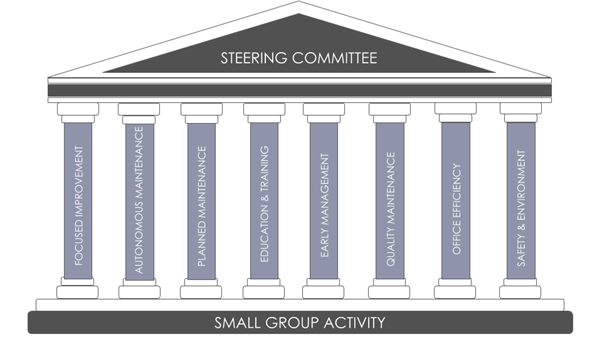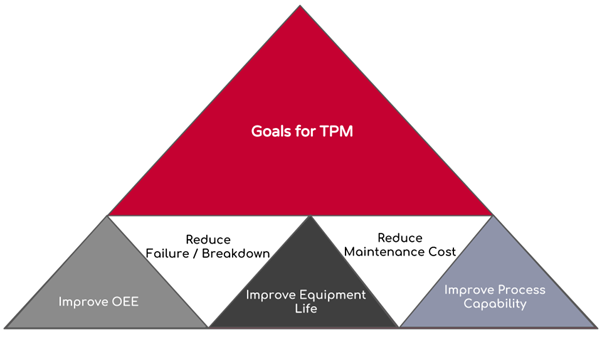TPM (Total Productive Maintenance) is a wholistic approach to WCM (World Class Manufacturing) culture in the organization. Another way of defining TPM is Total Profit Management.. TPM focuses on equipment upkeep and ensures that each machine delivers a quality product as per the rated output. There is a globally recognized structure for TPM and the ultimate recognition for an organization is in winning the TPM award instituted by JIPM (Japanese Institute of Plant Maintenance).

We at KIAP are more concerned with the use of relevant TPM concepts and tools to further the organization drive towards operational excellence. Typical goals for a KIAP initiative in TPM are as below.

KIAP does not work with client organizations with the goal of winning TPM award. Instead we focus on implementing three concepts (pillars) which are interrelated and together help take the operations to the next superior level.
Autonomous Maintenance
Usually, the machine operator learns only method of operation while the maintenance person is responsible for machine condition and functioning. When a problem arises with machine, operator calls maintenance person who then rectifies the problem; meanwhile output is lost due to the breakdown time. Also, many quality deviations come due to problems in machine functions. Autonomous Maintenance (AM) goal is to develop equipment competent operator, who can understand and ensure upkeep of his or her own machine.
Planned Maintenance
Planned Maintenance aims to achieve zero breakdowns. It follows a structured approach to establish a management system that extends the equipment reliability at optimum cost.We aim to establish a firm maintenance system, to improve the same and skill up the personnel to achieve zero breakdown at optimum maintenance cost.
Focused Improvement
Our focused improvement approach will be on eliminating the root cause of repeated breakdowns there by increasing the OEE of the machineries. The repeated breakdowns will be monitored and recorded and the root cause analysis will be made and the vital few contributors will be identified. Once the root causes are identified and then the ways to eliminate it would be brainstormed among the team and low-cost solutions will be implemented.
